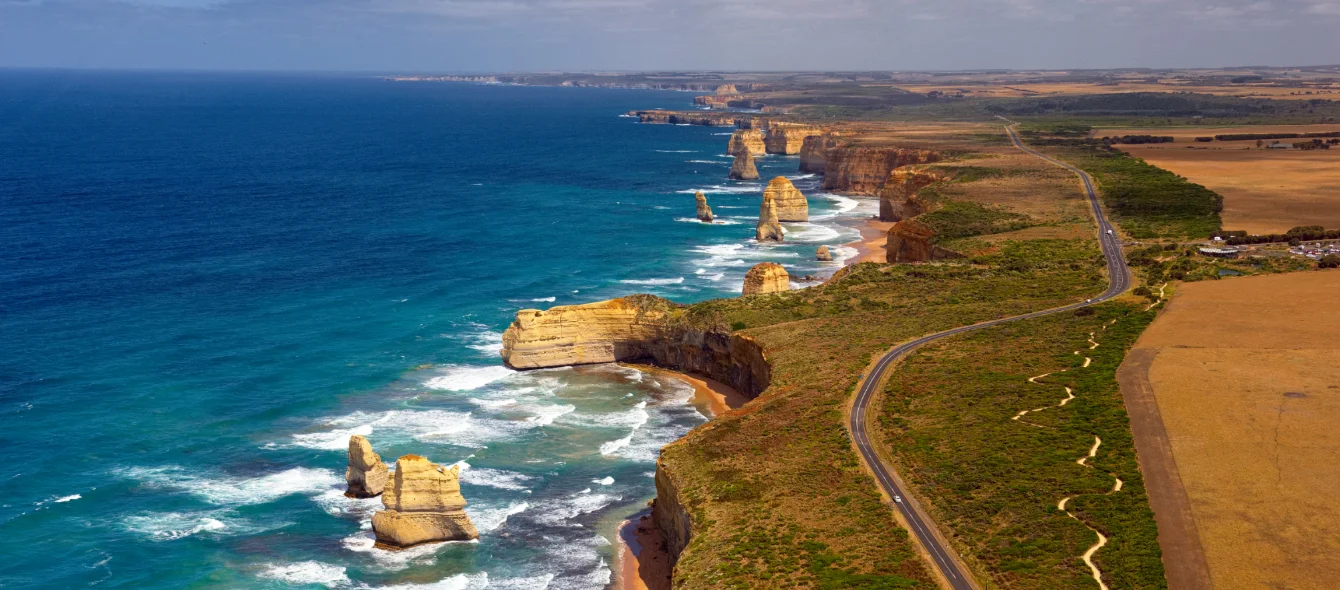Australia is rich in natural resources and a major exporter of traditional fossil fuels, primarily coal and Liquified Natural Gas, amongst other mineral exports, such as iron ore. But, by 2050, in line with the net zero carbon pathway outlined by the International Energy Agency (IEA), fossil fuel demand is expected to decline sharply to reduce global greenhouse gas emissions.
Australia thus faces a twin challenge: implementing its own domestic energy transition, but also re-orientating its export-based economy to align with global demand for resources. Myriad innovative ideas have been floated in the area of renewable energy development, where Australia’s potential for solar and wind development is huge. Attention has focussed on the export of green hydrogen, and, despite the long distances involved, the possibility of subsea electricity interconnectors running to countries such as Indonesia and Singapore.
However, to provide green energy at home and meet export demand, Australia needs to ramp up its domestic renewable energy production on a large scale.
Renewable potential offshore
As of end-2020, Australia had 17.6 GW of solar power installed, up 29.6%, from 2019, and 9.5 GW of onshore wind, up 32.2%. Despite these rapid rates of expansion, renewable generation, including hydropower, accounted for only 24.3% of domestic electricity generation.
However, a major step up could be provided by moving offshore to exploit more of the country’s vast wind potential. This, according to the IEA – based only on near-shore development in shallow waters – could provide more than 15 times Australia’s 2020 electricity generation, more than enough to create a huge surplus for export. Backing this up, a separate, government-funded report, published in July, concluded the technically accessible resource for offshore wind in Australia was a massive 2,233 GW.
Offshore Electricity Infrastructure Bill
A key first step in harvesting this extraordinary resource is to create a regulatory regime for offshore clean energy development, and a bill to do just that was introduced to the Australian Parliament in September.
Covering all forms of offshore clean energy generation, it aims to cover the full life cycle of development from initial exploration and feasibility studies, to construction, operation and transmission of power and, finally, the decommissioning of facilities.
The bill has been drafted using the experience of Australia’s Offshore Petroleum and Greenhouse Gas Storage Act of 2006 (OPGGSA), and existing bodies regulating offshore oil and gas development may see their remit expanded into the area of clean energy development.
The bill will allow the government to designate areas in Australian waters more than three miles from shore for wind energy development.
License structure
Three licenses will be established leading to commercial development: a feasibility license to assess the suitability of proposed sites; a commercial license, with an initial term of 40 years; and a transmission and infrastructure license.
In addition, a fourth license for the research and demonstration of emerging offshore technologies, will be established.
As with the OPGGSA, stewardship and financial assurance mechanisms are proposed to ensure safe and environmentally-responsible development, as well as a requirement to provide financial security for decommissioning costs.
The bill was endorsed by the Australian Senate’s Environment and Communications Legislation Committee in mid-October.
By providing a clear licensing regime, the bill, if passed, should make it much easier for developers to construct offshore clean energy projects.
Support mechanism next step
Renewable energy technologies have shown extraordinary cost reductions over the last two decades, to such an extent that onshore wind and solar are now the cheapest forms of electricity generation.
Offshore wind is no exception; costs have fallen fast, and innovation within the industry continues apace. But offshore wind developments tend to be large, to reap economies of scale, often exceeding a billion USD in value, and developers need financial security to convince lenders to provide finance.
In northern Europe, where offshore wind is most advanced, Contracts for Differences (CfDs) have proved a valuable tool in providing financial certainty, while at the same time protecting the interests of consumers. The use of auctions to gain competitive bids has also been a key element in lowering costs.
More than one ‘zero subsidy’ bid has already been made in northern Europe, and UK offshore wind farms may even, by the early-2020s, pay money back to government, according to a recent study conducted by researchers at Imperial College London.
This process highlights the ongoing falling cost of offshore wind, and that state support mechanisms, like CfDs, are not so much about subsidies, but providing the financial security that facilitates the mobilisation of billions of dollars in capital in support of the energy transition.
Developing a support scheme for offshore wind in Australia appears to be the next crucial step in moving towards large-scale deployment, as right now the technology cannot compete with onshore wind and solar, given Australia’s large sunny, windy and relatively unpopulated landmass. Although the Federal Government has shown no inclination to provide revenue stabilisation support for offshore, State governments are considering it as they can see the potential local economic benefits, particularly for areas transitioning from fossil fuel mining.
In fact, offshore wind developers in Australia are rearing to go. The bill before Parliament identified 12 large offshore wind projects under development, totalling 25 GW, more than two and half times the country’s current onshore wind capacity.
